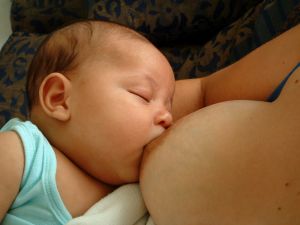By Lance Hugh
 Breast augmentation is one of the most common cosmetic surgeries, accounting for more than 300,000 procedures per year. The average implant patient is in her mid-30s and has already had a child, but many women also receive augmentation surgery at a younger age. Breast implants can interfere with breastfeeding if the procedure is performed incorrectly, but they don’t have to.
Breast augmentation is one of the most common cosmetic surgeries, accounting for more than 300,000 procedures per year. The average implant patient is in her mid-30s and has already had a child, but many women also receive augmentation surgery at a younger age. Breast implants can interfere with breastfeeding if the procedure is performed incorrectly, but they don’t have to.
Human lactation starts in the late part of pregnancy. The breasts begin to produce colostrum, a special type of early milk, but are prevented from excreting it until after birth. After a child is born, the mother’s hormone levels adapt, causing the breasts to fill with milk.
The milk is produced by the lactiferous ducts, which are located mostly around the nipple. These ducts drain into the nipple, where the milk is released for breastfeeding. Implants can theoretically interfere with this process if their filler leaks into the milk, if the implanting process damaged the milk ducts or nerves, or if the implant puts too much pressure on the milk ducts. Continue reading Effects of Breast Implants on Lactation